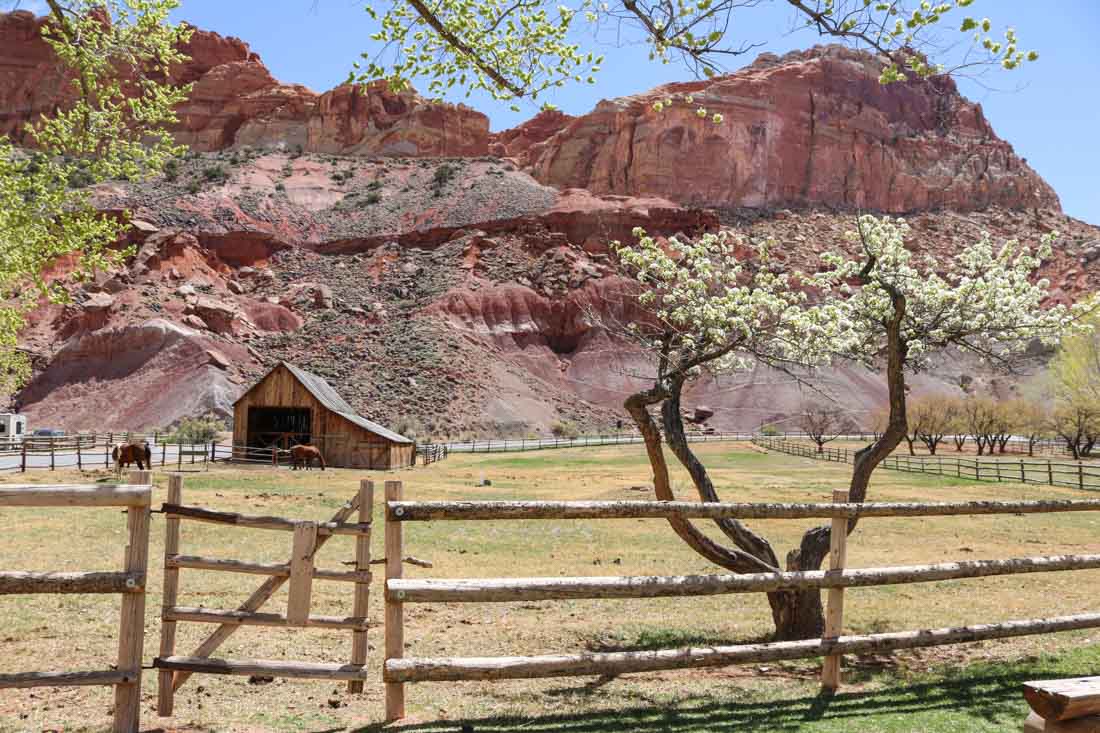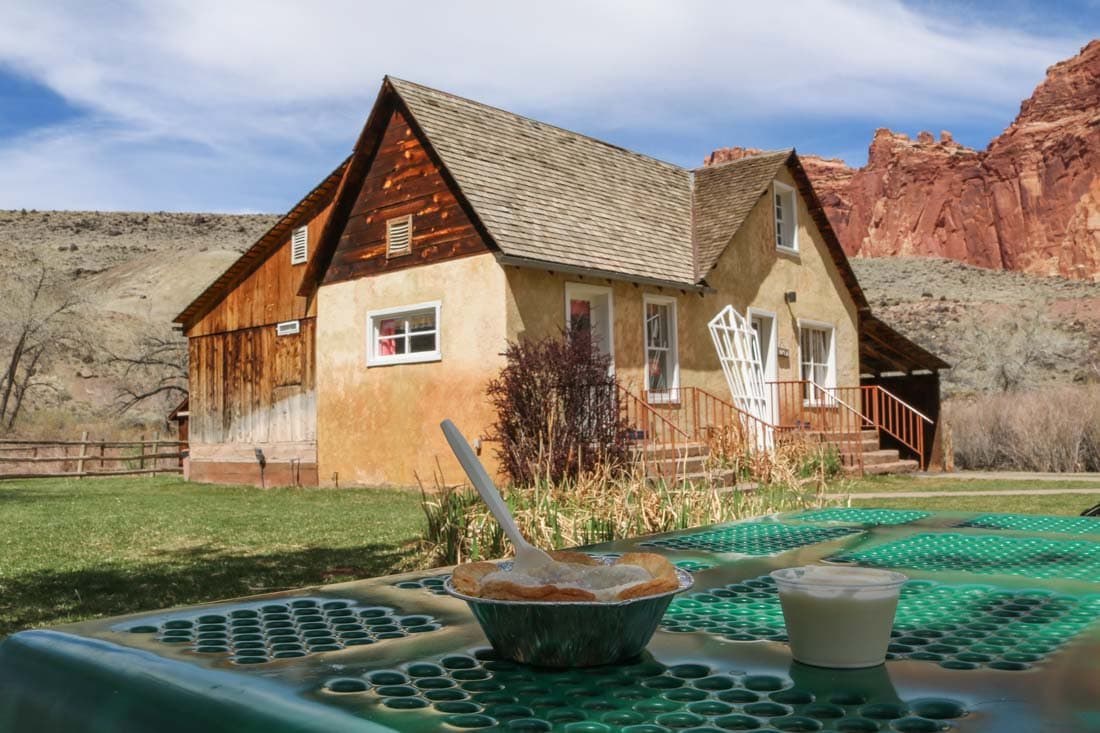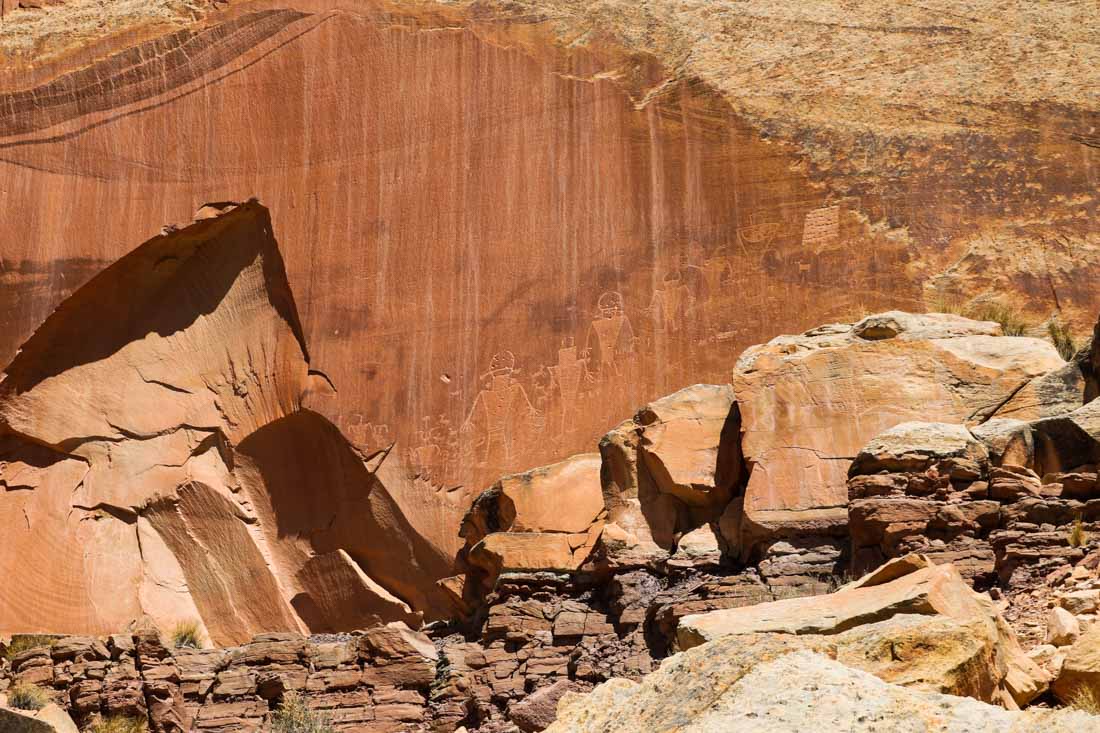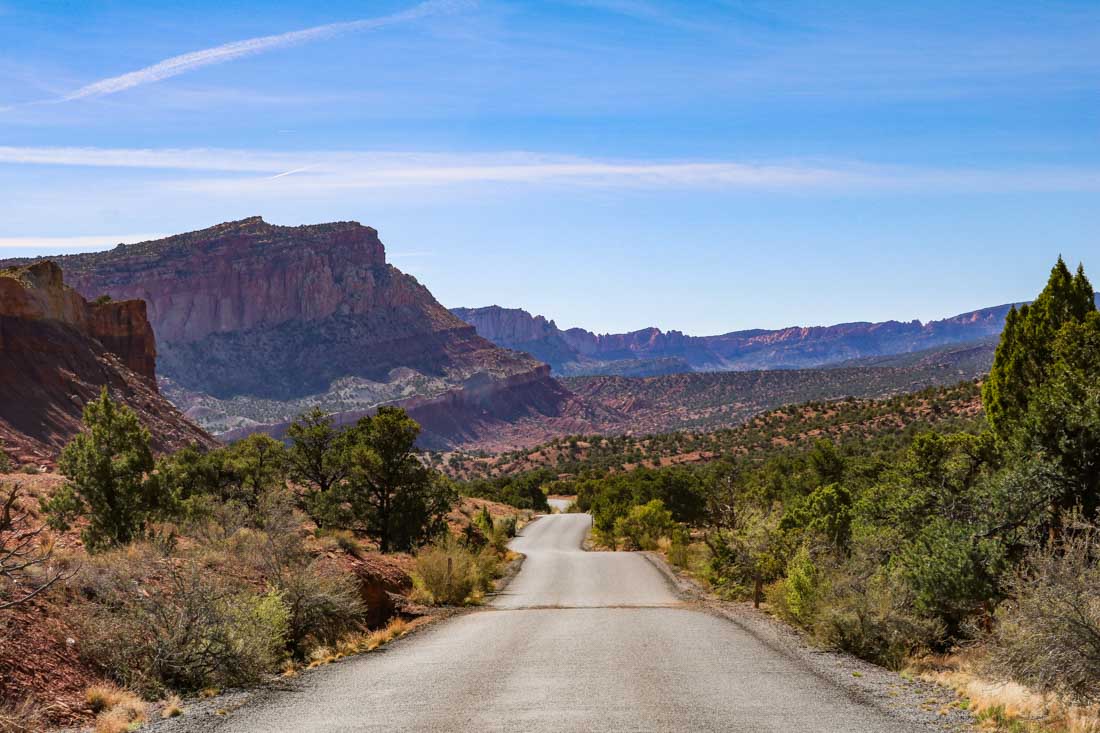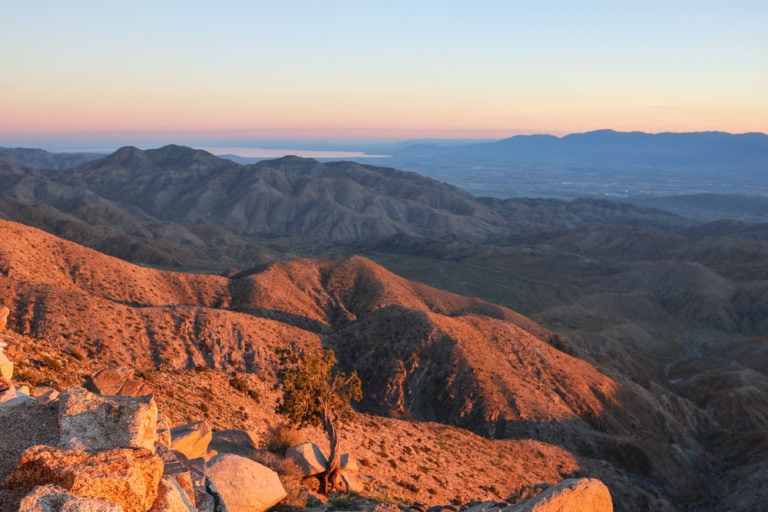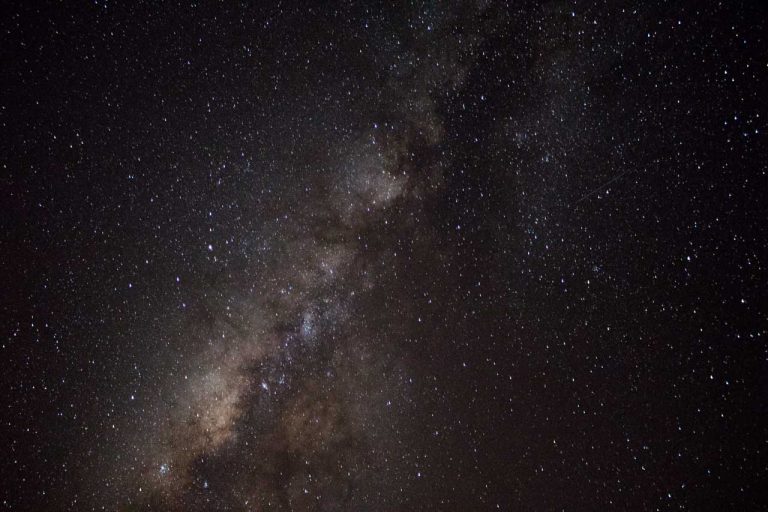Capitol Reef National Park Fruit Blossom & Harvest Calendar 2025
This article was last updated on March 13, 2025, with a new Capitol Reef fruit blossoms outlook shared by the park on its Facebook page.
From spring through fall, visiting the historic orchards in Fruita is one of the highlights of Capitol Reef National Park, Utah. While spring brings beautiful blossoms, summer and fall offer fun fruit picking in the Capitol Reef orchards.
If you’re planning on enjoying the wonderful spring blossoms in Capitol Reef, I’ve included a blossom calendar below.
In case, on the other hand, you’re more interested in picking some organically grown fruits during your visit, you might find the Capitol Reef fruit harvest calendar useful.
The Historic Fruita Orchards in Capitol Reef National Park
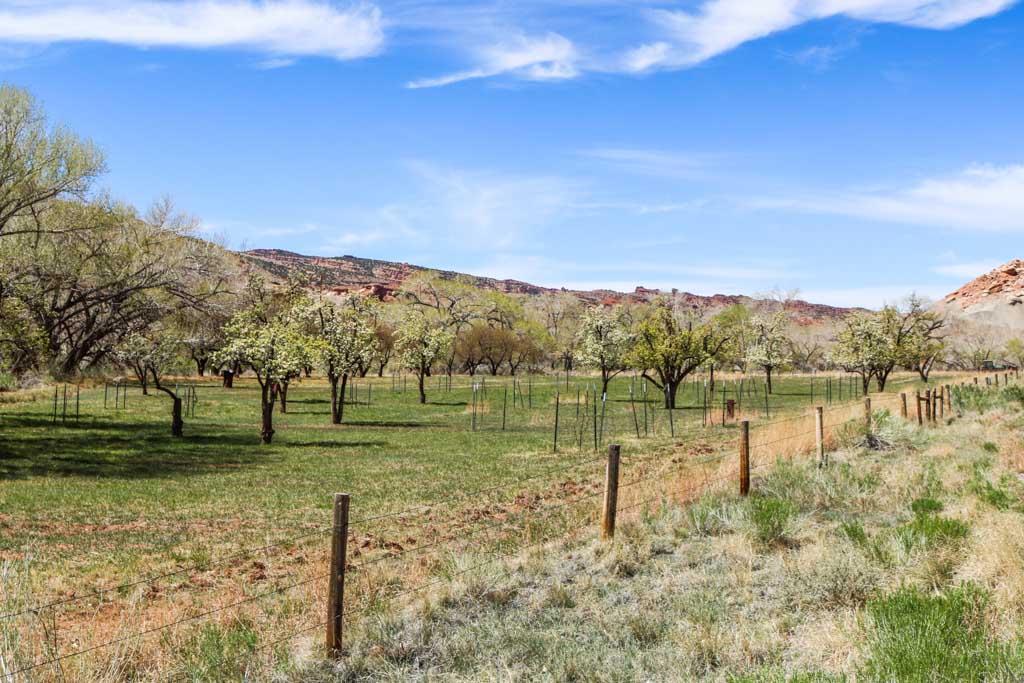
The orchards in Fruita, the main tourist center in Capitol Reef National Park, date back to the late-19th century. That’s when the pioneer settlers of the Church of Jesus Christ of Latter-Day Saints, better known as Mormons, established them.
The Mormon pioneers planted thousands of fruit trees in the lush and fertile Fremont River Valley in south-central Utah, which provided them with both food and income from the 1880s to the 1960s.
Each family had a variety of fruit trees, from apples, apricots and cherries to pears, peaches and plums. Dozens of varieties of these heirloom fruits grow in Fruita’s orchards to this day.
The Mormons did, however, face some growing and harvesting challenges during the time they lived in Fruita. Floods, disease and droughts were regular problems. Nowadays, these orchards in Capitol Reef National Park are maintained using the historic production methods that the Mormons themselves used, which offers insights into how they lived.
The National Park Service still uses historic cultural irrigation, pest management, pruning, mowing, grafting and planting practices.
In practical terms, this means that the trees get their water from the same flood irrigation ditches that were dug by the Mormons over 100 years ago.
Capitol Reef’s orchards are important cultural heritage and enjoy protection as the Fruita Rural Historical Landscape, which is on the National Register of Historic Places.
Not only are these historic orchards open to the public, but you can also pick your own fruit here. The money that Capitol Reef National Park collects from fruit sales is used to (partially) cover the costs to maintain the orchards, which are among the largest in the entire National Park System.
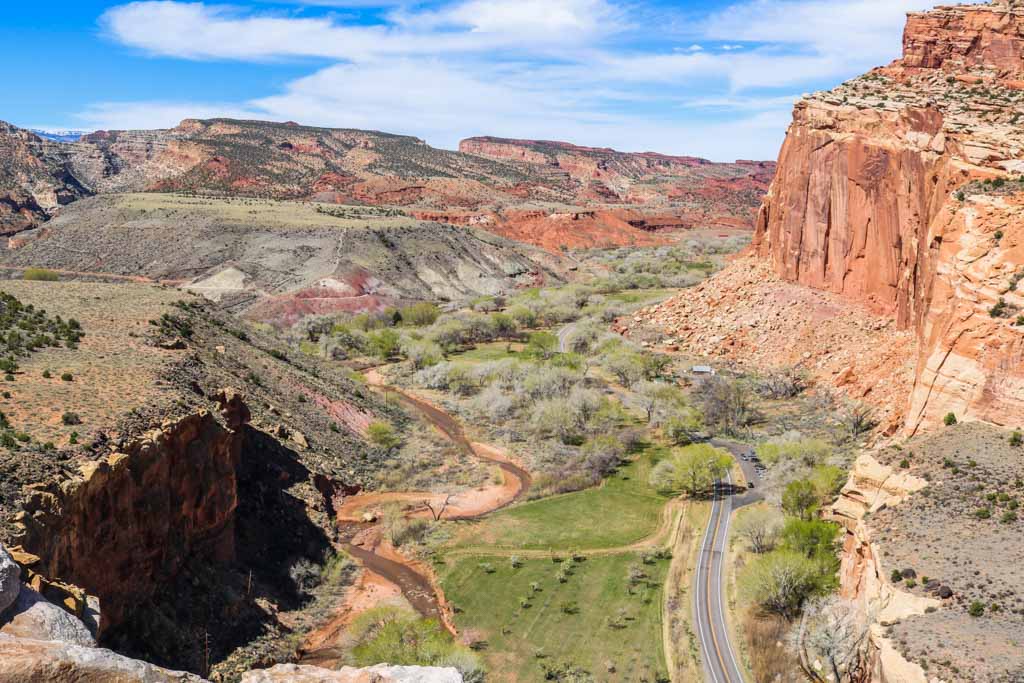
Capitol Reef National Park Fruit Blossoms Calendar 2025
Each spring, the orchards of Capitol Reef National Park burst into color. Because of the large number of fruit trees, this is quite the sight—it’s one of my personal favorite memories of our April visit to the park.
Generally, the peak of the blossoms in Capitol Reef occurs from March through April, depending on the type of fruit and weather conditions.
On March 11, 2025, the National Park Service shared its first outlook on the predicted fruit blossoms in Capitol Reef National Park.
“[A]pricots are expected to bloom over the next two weeks closely followed by peaches. Apples and pears should bloom the week after next, lasting about two weeks. Cherries, as the last fruit trees to bloom, are expected around the final week of March,” the park said on Facebook.
Historically, these are the best times to see the Capitol Reef National Park blossoms for four specific fruits (note that this list, provided by the NPS, is limited and does not contain all different kinds of fruit in Capitol Reef):
- Apricots: early-March to mid-April
- Peaches: late-March to late-April
- Pears: late-March to early-May
- Apples: early-April to early-May
It’s worth noting, however, that, depending on how cold or warm the previous winter was, fruit blossom and harvest times in Capitol Reef National Park “can vary up to a few weeks earlier or later than the ranges given above,” the National Park Service says.
Capitol Reef National Park Fruit Harvest Calendar 2024
As beautiful as the spring blossoms in Capitol Reef National Park are, you can’t eat those flowers!
If you’re looking to harvest fruit at Capitol Reef, you’ll have to wait until summer or fall. In this case, too, the exact fruit picking time windows differ between fruit types, and are dependent on weather.
Historically, these are the best times to pick fruit in Capitol Reef National Park for specific fruits:
- Apricots: late-June to mid-July
- Peaches: late-July to early-September
- Pears: early-August to early-September
- Apples: mid-August to mid-October
Remember that both the Capitol Reef blossoms calendar and harvest calendar can vary up to a few weeks each year. For accurate up-to-date information, you can call the park’s very own “fruit hotline” at 435-425-3791. After the introduction, press #1 for general information, followed by pressing #5 for updates on Capitol Reef’s fruit blossoms or picking.
2025 Capitol Reef Fruit Harvest Predictions
Historically, these are the Capitol Reef fruit harvest predictions by the National Park Service:
- Apricots and sweet cherries: anticipated to become available in early-July.
- Peaches: expected to be ripe in mid-August to early-September.
- Apples and pears: may begin to ripen in mid-August through September.
Fruit harvest information and pricing will be recorded on the Capitol Reef orchard hotline (see above) as fruit ripens and specific harvest start dates are determined.
For more online information, you can visit the national park’s website or follow the park’s Facebook page and Twitter feed.
Map of the Orchards in Fruita
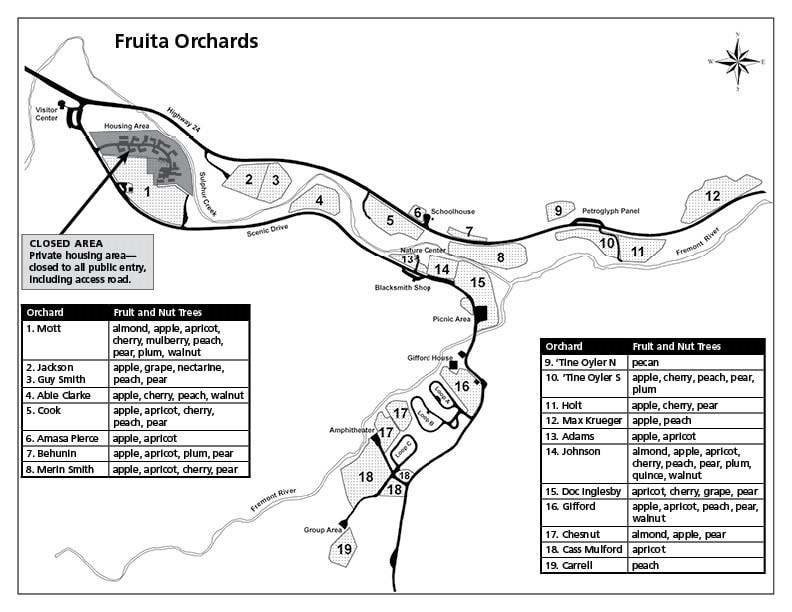
Capitol Reef Fruit Picking Regulations
To make the Capitol Reef fruit harvest enjoyable for all visitors, and to protect these historic orchards, there are some guidelines and regulations you must follow.
- Only harvest ripe fruit from orchards that have “U-Pick Fruit” signs.
- Do not pick unripe fruit. Posted signs will indicate which type of fruit is available for picking. Fruit is ripe if it easily comes off the tree.
- You must pay for all fruit taken from the orchards in Capitol Reef National Park. You can find a self-pay station, scale and sign that lists individual fruit prices near the entrance of orchards that are open for fruit harvest. Non-payment of orchard fees could result in a citation and fine.
- Fenced orchard hours: 9 a.m. to 5 p.m.
- Unfenced orchard hours: dawn to dusk.
- Never climb these historic trees. The National Park Service provides special fruit picking ladders and tools to reach ripe fruit. Please return pickers to the weigh station when done.
- Never use hammocks or slacklines in the orchards. Never attach anything to the trees. Fruit trees are easily damaged.
- Leashed pets are permitted inside the orchards.
- Do not touch the objects hanging from branches. Pheromone disruptors and traps for insect control should not be handled.
- Your safety is your responsibility. Carefully read and follow all posted instructions. Watch where you put your feet when walking through the orchards. Be careful on ladders.
- Please bring your own bags to harvest fruit.
Other Things to Do in Fruita
Besides enjoying the Capitol Reef fruit blossoms or harvesting juicy fruit, the historic settlement of Fruita has several other things to offer. This is the location of the park’s only developed campground—the 71-site Fruita Campground—while the visitor center is also situated there.
Gifford Homestead
The Gifford Homestead is a collection of historic farm buildings, now encompassing the photogenic Pendleton Barn and Gifford House.
The latter is home to a wonderful store that sells all kinds of products, from reproduction utensils and tools used daily by Mormon pioneers to historic postcards, books, quilts, rugs, candles and soaps.
Perhaps not surprising considering the house’s location amid the Capitol Reef orchards, there’s also a huge selection of jams, jellies, locally baked fruit pies and homemade ice cream. Trust me when I say that, after a day of hiking Capitol Reef’s trails, a slice of pie with a scoop or two of ice cream is an absolute delight.
Fruita Schoolhouse & Petroglyph Panel
Nearby, you can visit the historic Fruita Schoolhouse and the Petroglyph Panel, which dates from the Fremont Culture, about 1,000 years ago.
Scenic Drive
Additionally, Fruita is also the starting point of the park’s Scenic Drive, a stunning road offering amazing views and access to a number of hiking trails.
Starting just behind the Fruita Campground, the Scenic Drive is the only part of Capitol Reef National Park that requires you to pay an entrance fee, but it’s totally worth the money.

